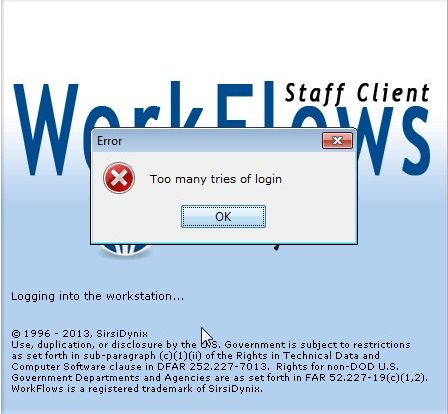By Ryan Johnson, technology training coordinator
 With a new semester underway, it’s always a good reminder to close WorkFlows when you are done with a session, especially when working at a shared computer such as at a servicedesk. If you don’t close WorkFlows, the next person who tries to login will get a “Too many tries of login” error, because the workstation is still logged in.
With a new semester underway, it’s always a good reminder to close WorkFlows when you are done with a session, especially when working at a shared computer such as at a servicedesk. If you don’t close WorkFlows, the next person who tries to login will get a “Too many tries of login” error, because the workstation is still logged in.
 To prevent this error, make to close WorkFlows and log off the machine when completed with your work.
To prevent this error, make to close WorkFlows and log off the machine when completed with your work.

